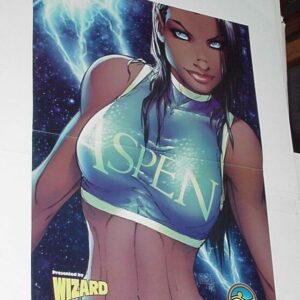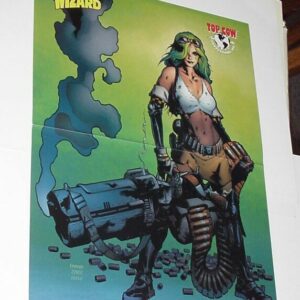Description
Alien is a 1979 science-fiction horror film directed by Ridley Scott, and starring Tom Skerritt, Sigourney Weaver, Veronica Cartwright, Harry Dean Stanton, John Hurt, Ian Holm and Yaphet Kotto. The film’s title refers to a highly aggressive extraterrestrial creature that stalks and kills the crew of a spaceship. Dan O’Bannon wrote the screenplay from a story he wrote with Ronald Shusett, drawing influence from previous works of science fiction and horror. The film was produced by Gordon Carroll, David Giler and Walter Hill through their Brandywine Productions and distributed by 20th Century Fox. Giler and Hill made revisions and additions to the script. Shusett was executive producer. The eponymous Alien and its accompanying elements were designed by Swiss surrealist artist H. R. Giger, while concept artists Ron Cobb and Chris Foss designed the human aspects of the film.
Alien received both critical acclaim and box office success, receiving an Academy Award for Best Visual Effects, Saturn Awards for Best Science Fiction Film, Best Direction for Scott, and Best Supporting Actress for Cartwright, and a Hugo Award for Best Dramatic Presentation, along with numerous other award nominations. It has remained highly praised in subsequent decades, being inducted into the National Film Registry of the Library of Congress in 2002 for historical preservation as a film which is “culturally, historically, or aesthetically significant”. In 2008, it was ranked as the seventh-best film in the science fiction genre by the American Film Institute, and as the 33rd greatest movie of all time by Empire magazine.
The success of Alien spawned a media franchise of novels, comic books, video games, and toys. It also launched Weaver’s acting career by providing her with her first lead role, and the story of her character Ripley’s encounters with the Alien creatures became the thematic thread that ran through the sequels Aliens (1986), Alien 3 (1992), and Alien Resurrection (1997).
In an unspecified year in the future, the commercial spacecraft Nostromo is on a return trip to Earth with a 7-member crew in stasis. Detecting a mysterious transmission, possibly a distress signal, from a nearby planetoid, the ship’s computer, the M.O.T.H.E.R, awakens the crew. Under prior orders from their employers, the Nostromo lands on the planetoid and Captain Dallas, Executive Officer Kane, and Navigator Lambert head out to investigate and discover the signal is coming from a derelict alien spacecraft. Inside, they find the remains of a large alien creature whose ribcage appears to have exploded from the inside.
The Derelict is the informal designation for the spacecraft discovered on the Acheron LV-426 moon. In 2122 an unknown warning signal broadcast from the Derelict summoned the Weyland-Yutani commercial hauler USCSS Nostromo to the Acheron moon. The Derelict is believed to have crashed on Acheron several millennia prior to the arrival of the Nostromo. The origin of the Derelict and the Engineer who piloted it remain unknown.
According to the book Giger’s Alien, the eggs were originally meant to be housed in a completely separate architectural structure, shaped in the form of a massive pyramid. This would imply the previous existence of a native civilization, wiped out by their reverence for the creatures.
“The first second that Ridley saw Giger’s work, he knew that the biggest single design problem, maybe the biggest problem in the film, had been solved.” Scott flew to Zürich to meet Giger and recruited him to work on all aspects of the Alien and its environment including the surface of the planetoid, the derelict spacecraft, and all four forms of the Alien from the egg to the adult. H. R. Giger designed and worked on all of the alien aspects of the film, which he designed to appear organic and biomechanical in contrast to the industrial look of the Nostromo and its human elements. For the interior of the derelict spacecraft and egg chamber he used dried bones together with plaster to sculpt much of the scenery and elements.
Art Director Les Dilley created 1/24th scale miniatures of the planetoid’s surface and derelict spacecraft based on Giger’s designs, then made moulds and casts and scaled them up as diagrams for the wood and fiberglass forms of the sets. Tons of sand, plaster, fiberglass, rock, and gravel were shipped into the studio to sculpt a desert landscape for the planetoid’s surface, which the actors would walk across wearing space suit costumes.
The spaceships and planets for the film were shot using models and miniatures. These included models of the Nostromo, its attached mineral refinery, the escape shuttle Narcissus, the alien planetoid, and the exterior and interior of the derelict spacecraft.
Frame is shrinkwrapped until time of purchase. Ships boxed with packing peanuts.
THE PERFECT GIFT!














